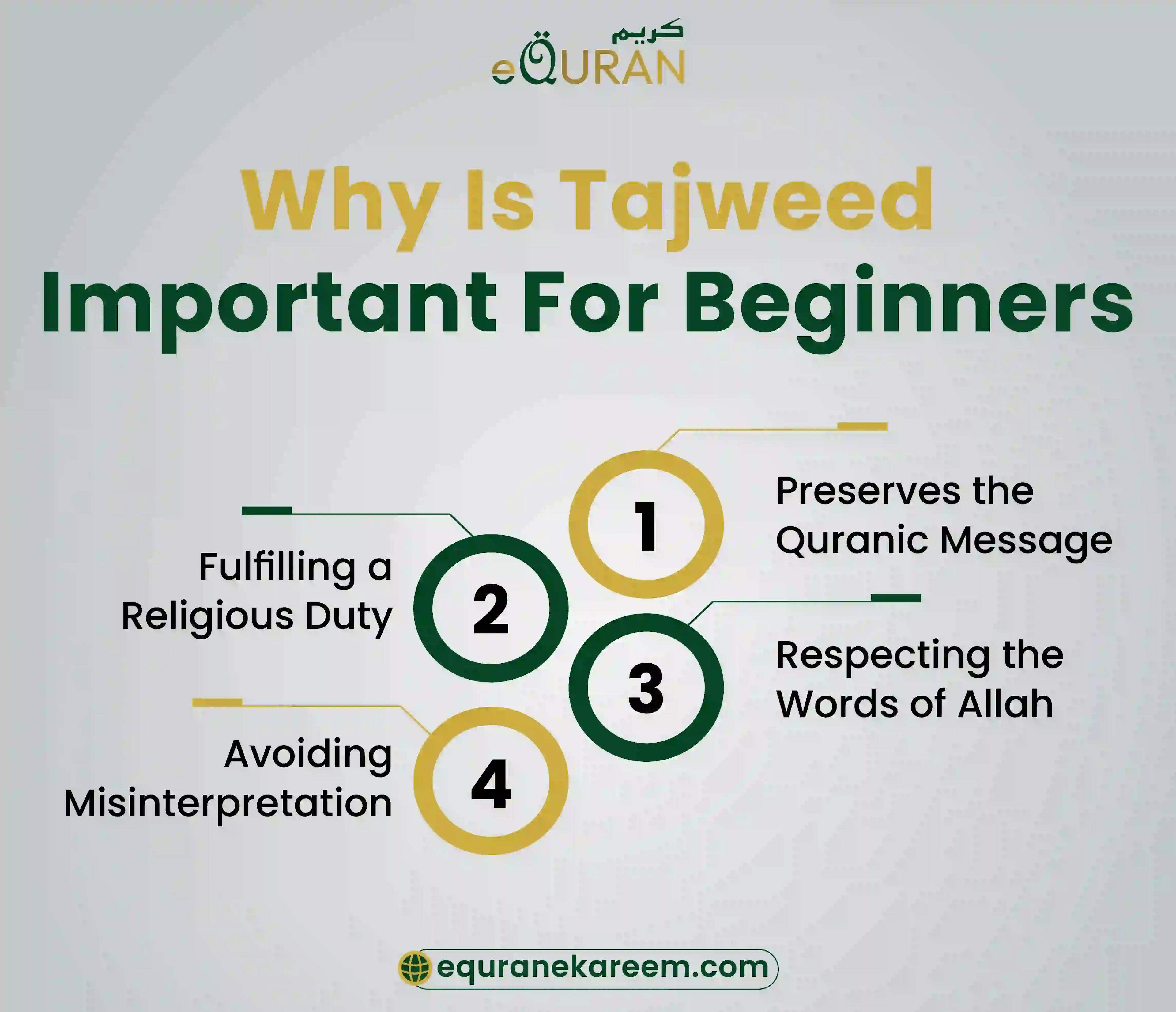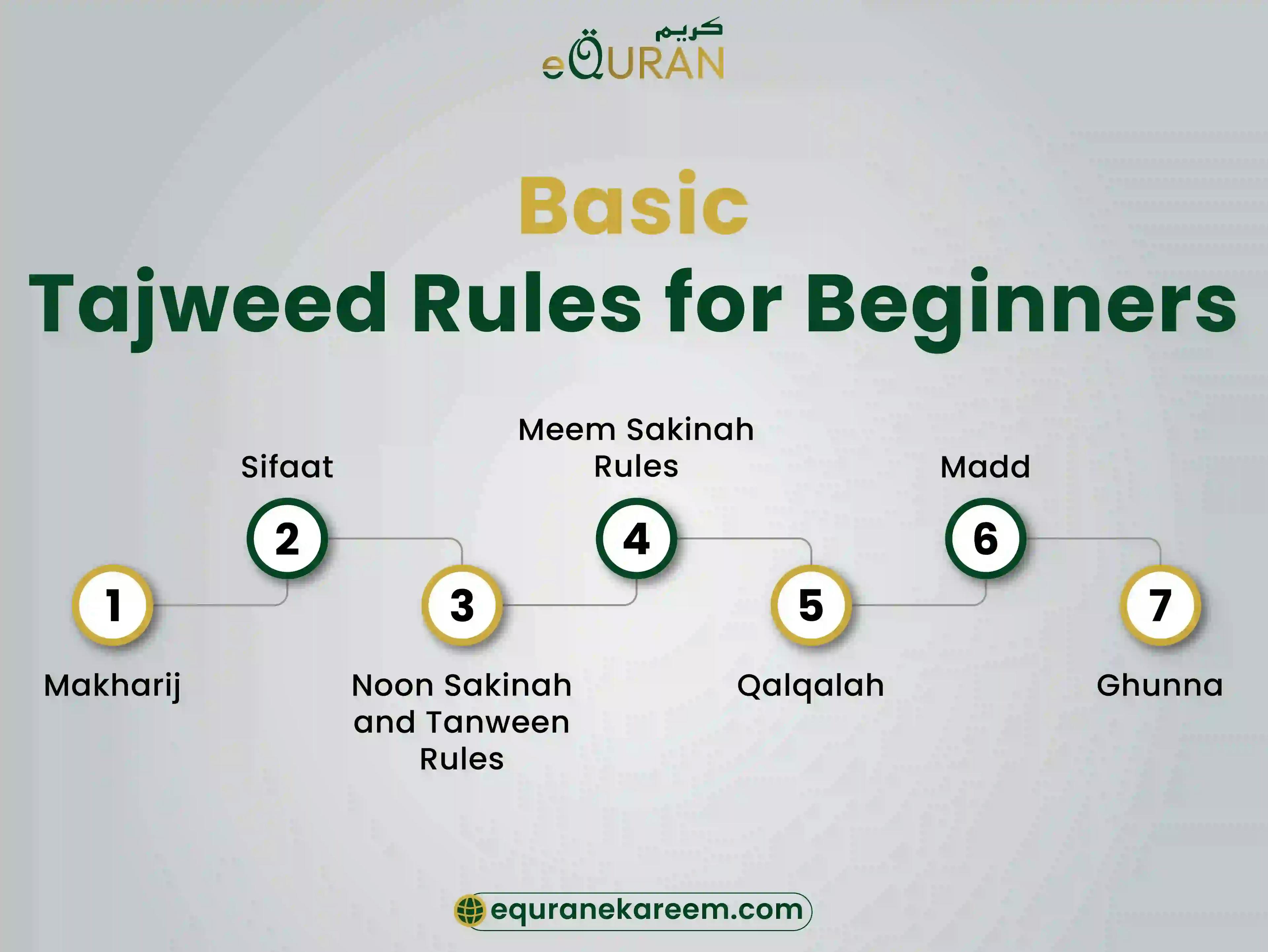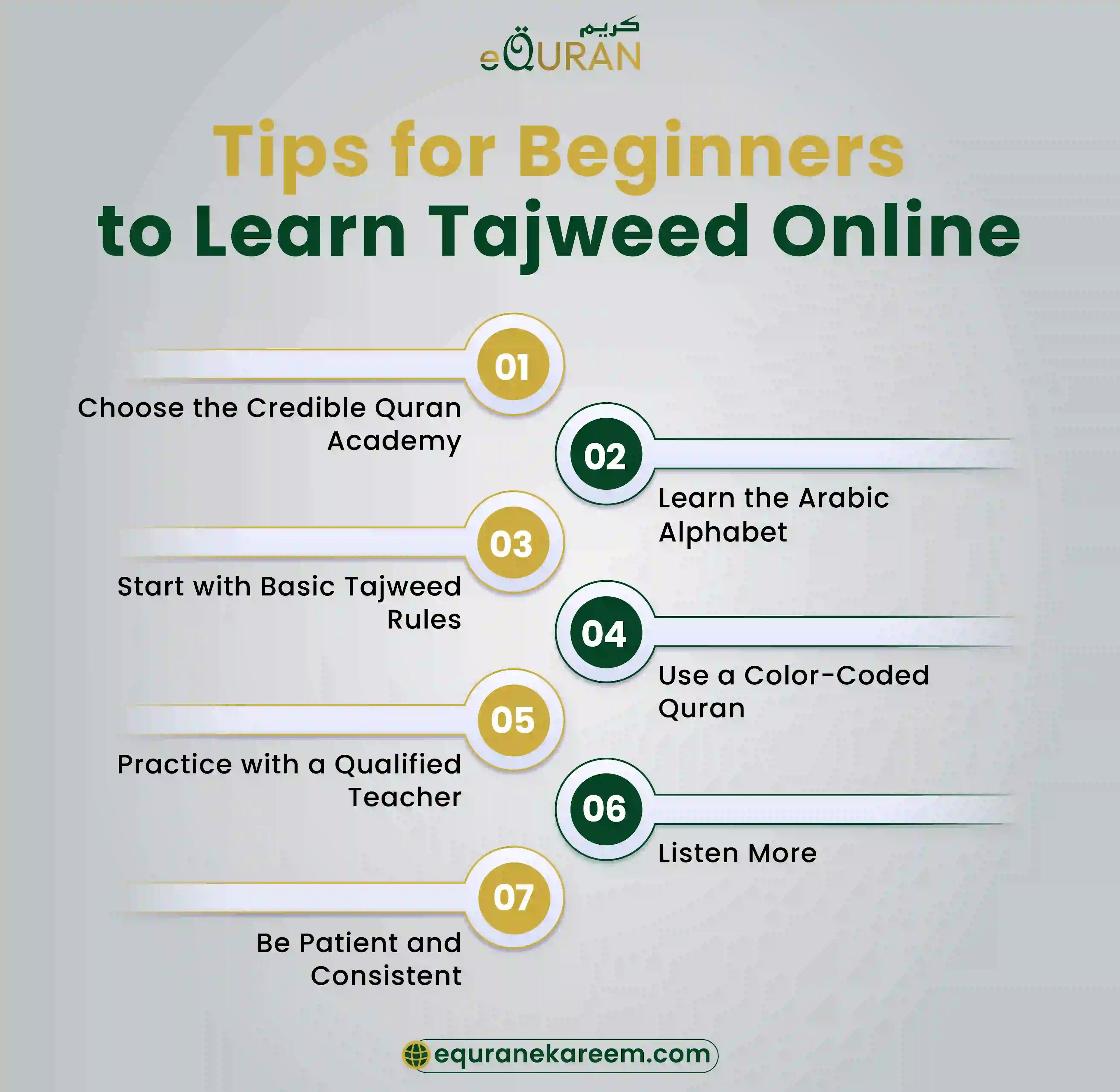
Tajweed for Beginners paves the way for the correct Quran pronunciation and recitation. It involves understanding the articulation points of letters, vowel markings, and rules like Noon Sakinah and Tanween.
In this blog, we will help you with the Tajweed, its rules, importance, and how beginners can learn the Quran with Tajweed easily.
Why Is Tajweed Important For Beginners

Tajweed is the essence of the Quran recitation. It ensures that the verses are recited the way it was revealed and taught by the Holy Prophet (SAW). For beginners, learning the Quran with tajweed is important in several ways.
Preserves the Quranic Message
Tajweed ensures that the Quran is passed down correctly from generation to generation. The beginners play a vital role in the preservation and spreading of the correct version of divine revelation.
Mispronouncing a word can change its meaning. So, proper Tajweed preserves the integrity of the message.
Fulfilling a Religious Duty
Allah commands in Surah Al-Muzzammil, verse 4, to recite the Quran with measured recitation. Scholars interpret this as reading the Quran with Tajweed. Following this command shows our obedience and reverence for the words of Allah. So, learning Tajweed for beginners is an act of fulfilling the religious duty.
Respecting the Words of Allah
The Quran is the words of Allah Almighty. Tajweed demonstrates our love, care, and respect for these words by reciting them correctly. As we present ourselves clean and pure when praying, we must speak His words with precision and care.
Avoiding Misinterpretation
The Quran beginners should learn tajweed to recite the Quran correctly. Incorrect pronunciation can lead to unintended meanings. It may result in theological errors. For example, mispronouncing "قَلْب" (heart) as "كَلْب" (dog) completely changes the meaning. Tajweed helps beginners protect themselves from such huge mistakes in recitation.
Basic Tajweed Rules for Beginners

There are several tajweed rules that the beginners must know and follow. These rules are related to the articulation and pronunciation of each word within a sentence. Ignoring these rules can change the intended meaning of verses.
Makharij
Makharij means the point of articulation of letters. Each Arabic letter originates from a specific place in the mouth or throat. The correct pronunciation depends on knowing where the sound should come from.
For example, the letters ‘Saad' (ص) and ‘Seen' (س) have the same articulation point. But they differ in how they are pronounced. ‘Saad is pronounced heavily, and ‘Seen’ is pronounced lightly.
Sifaat
Sifaat are the characteristics of letters. Every letter has certain qualities, such as heaviness, softness, or echoing.
Understanding Sifaat prevents mistakes like pronouncing a heavy letter lightly. Examples include bold letters like "ض" and light ones like "ت".
Noon Sakinah and Tanween Rules
These rules apply when a "ن" with sukoon or tanween is followed by another letter.
There are four cases of Noon Sakinah
- Izhar: Clear pronunciation of Noon Saakin or Tanween when followed by certain letters.
- Idgham: Merging Noon Saakin or Tanween with a letter, with or without Ghunnah.
- Iqlab: Transforming Noon Saakin or Tanween into a Meem (م) before the letter Baa (ب).
- Ikhfaa: Partial pronunciation of Noon Saakin or Tanween, a middle ground between clear pronunciation and merging.
Meem Sakinah Rules
Similar to Noon Sakinah, rules for Meem ‘م’ with sukoon focus on clarity or merging.
The three main rules are: Ikhfa Shafawi, Idgham Shafawi, and Izhar Shafawi. These are important when reciting verses with consecutive "م" sounds.
Qalqalah
This applies to five letters, ق، ط، ب، ج، د, when they have sukoon. They should be pronounced with a slight bounce or echo.
Madd
Madd means to stretch or elongate the sound of certain letters like ‘Waw’, ‘Alif’, and ‘Yaa’. There are different types of Madd based on the letters and context.
Ghunna
Gunnah is a sound that is pronounced through the nose. It lasts about two counts and is applied to Noon ‘ن’ and Meem 'م'. It is applied during Idgham and Ikhfa.
Tips for Beginners to Learn Tajweed Online
Online tajweed learning may be challenging for beginners. However, with the right guidance, strategies, and platform, you can easily learn Quran Tajweed online in less time.

Choose the Credible Quran Academy
Choosing the right online Quran academy is the first step for beginners to get mastery in tajweed. Before hiring a tajweed tutor, explore different websites and choose a credible platform for you.
h3> Learn the Arabic Alphabet
Mastering Tajweed online begins with knowing and recognizing the Arabic alphabet. Learn how each Arabic letter is formed and pronounced. Understanding the makharij (articulation points) will help prevent common pronunciation errors. Spend time listening and repeating each letter until you are confident.
Start with Basic Tajweed Rules
Begin learning tajweed with essential rules like noon saakin, meem saakin, madd, qalqala, and qalb. As you apply them in short surahs, your understanding and fluency will grow naturally.
Use a Color-Coded Quran
Color-coded Qurans are a helpful tool for beginners. They visually indicate where rules apply. It helps when to stretch a sound or make nasalization. This makes learning and applying Tajweed easier during recitation.
Practice with a Qualified Teacher
A teacher can help correct your pronunciation. An expert online tajweed tutor can guide you through the rules that might seem confusing. Tajweed is best learned through oral transmission. Like the Prophet (SAW) taught His companions. So, repeat the lesson and recitation with your teacher.
Listen More
Listening can help beginners in online Tajweed learning. Choose a Qari (reciter) and listen to him regularly. Copy his pronunciation and rhythm. This trains your ear and tongue to form the correct sounds.
Be Patient and Consistent
Tajweed can not be learned overnight. It needs consistent practice and patience. Set realistic goals and keep practicing. Keep discipline and motivate yourself.
Conclusion
Learning Tajweed is important for beginners to lay a strong and correct foundation for Quran recitation. It aims to beautify and preserve the integrity of the Quranic text during recitation.You can learn Tajweed online with eQuranekareem.

Learn Tajweed Online With Us
Are you looking to teach your kids the Quran with tajweed? Get in touch. We have a comprehensive online Tajweed Quran course to make you and your kids proficient in Quran recitation.



